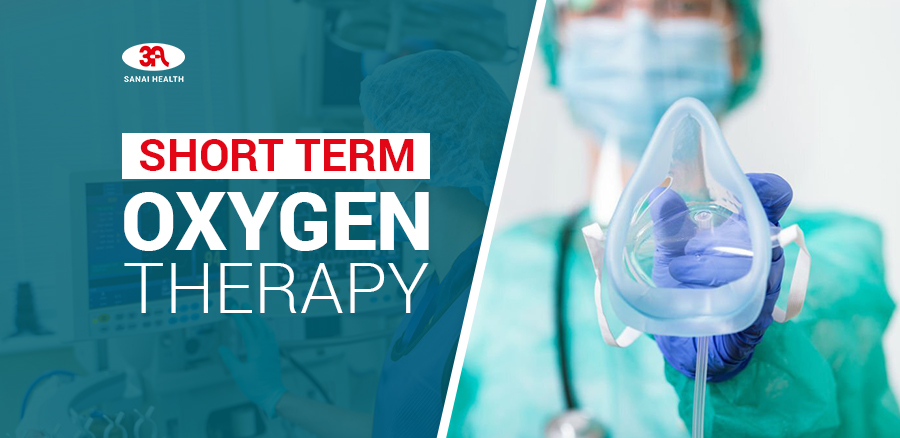Short Term Oxygen Therapy: To Continue or To Stop?
When it comes to supplemental oxygen prescription, there are a lot of protocols that have become a norm. Short term oxygen therapy is one of the protocols that were formed without a lot of research data to back it up. The limited date available on the topic of short term oxygen therapy may limit its use and yet it continues to be prescribed. Doctors readily prescribe oxygen concentrators and oxygen cylinders for such patients. Let’s talk about this lesser known form of supplemental oxygen therapy for pulmonary health.
What is Short Term Oxygen Therapy?
It is prescribed supplemental oxygen therapy for home use that is given when the patient is discharged from the hospital. The prescription of a short term oxygen therapy requires checking of the arterial blood oxygen level at the time of discharge; if the blood oxygen level is lower than 55mmHg.
Who is Prescribed Short Oxygen Therapy?
There are a number of patients that meet the criteria of short term oxygen therapy as used by the medical professionals currently. The following patients end up getting oxygen concentrators in their prescriptions:
- Patients with breathlessness. In these patients, oxygen cylinders or medical oxygen concentrators are prescribed with the hopes that the oxygen will help the body get much needed oxygen.
- Chronic obstructive pulmonary disease (COPD) and interstitial lung disease (ILD), both of the lung conditions limit the ability of the lungs to absorb oxygen from the inhaled air.
- Congestive heart failure patients experience breathlessness as their pulmonary edema increase. The presence of supplemental oxygen can help these patients breath easily.
- Pneumonia and pulmonary embolism also present a concerning clinical picture and may require short term oxygen therapy for a while.
- Patients with malignant tumors. The issue with these patients is that their lungs have infiltrates of tumor and that is a cause of concern.
What are Short Term Oxygen Therapy Options?
There are two most commonly used supplemental oxygen therapy options when it comes to care at home.
- Oxygen Cylinder: The most used option for cases where the oxygen therapy is temporary. The patient can get their oxygen tanks refilled at the local provider or they can get the refilled oxygen tanks delivered to them. The best thing about these tanks is that they are affordable for the patient.
- Portable Oxygen Concentrator or Stationary Oxygen Concentrator: This option is more viable for patients that will be on oxygen therapy for a longer period of time. The more movement a patient wants, the better it is that they get portable oxygen concentrator for their personal use rather than the stationary oxygen concentrator. With the recharging options, the portable oxygen concentrator provides an unparalleled opportunity to move around freely.
What are the Common Issues With Continuing Short Term Oxygen Therapy?
Let’s not forget that the oxygen therapy comes with it own set of counter indications. If the patient is allowed to use oxygen concentrators unchecked, they end up with one of the following conditions.
- Oxygen Toxicity: When the patient is taking oxygen therapy without checking their oxygen level, they open their lungs to oxygen toxicity. Excessive exposure to oxygen therapy can lead to damage to lung tissue. This damage will lead to coughing and breathlessness that may or may not progress to death.
- Oxidative Stress: Patients that take more than 28% oxygen for a period of half an hour or more, when they don’t actually need it, start showing signs of stress in their airways. The chemical profile shows an increase in cytokines.
- Heart & Other Tissue Damage: With uncontrolled supplemental oxygen therapy with pure oxygen tanks and concentrators, there is an increase in deaths associated with heard diseases, stroke and sepsis. Lung injury can easily lead to the spread of bacteria.
- Cost Issues: It is hard to ignore that the oxygen cylinders for medical use require regular refills or that an oxygen concentrator is an investment for one’s health even when its rented, it costs the patient some good bucks.
Things You Need to be Worried About With Short Term Oxygen Therapy
As a medical professional, you should keep a keen eye on the following things:
- Patient’s Reliance on the Device: Some patients might feel that their pulmonary health now relies on their use of the oxygen concentrators. These patients will simply continue to use the oxygen device regardless of your professional opinion.
- Patient’s Ability to Keep a Check on Oxygen Level: Pulse oximeter is a necessity with these patients. You don’t want to get hyperoxemia and the best way to prevent that is by making sure that your patient knows when to stop.
- Education of the Medical Personnel About Short Term Oxygen Therapy: It is not hard to see that this therapy is prescribed pretty freely by the personnel. They need to start following guidelines in order to properly prescribe this treatment option.
How Will a Visit to the Doctor Help?
A physician will check the pulmonary health markers in the patient. Understandably, at 90 days mark one of the two things will be visible:
- Patient has made recovery and their oxygen levels are more than 60mmHg. The patient will not qualify for the long term oxygen therapy and access to the supplemental oxygen will cease.
- Patient has oxygen levels that match the criteria for long term oxygen therapy. This patient will continue to receive supplemental oxygen therapy.
The important thing in both scenarios is that the patient will receive appropriate treatment that will help them get better.

